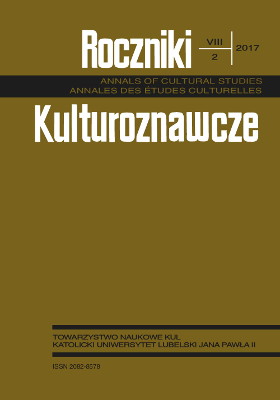Dzieła ojca Efrema z Kcyni (Stanisława Klawittera, 1894–1970) w zbiorach Muzeum Franciszkańskiego w Rzymie
Works of Friar Ephrem from Kcynia (Stanisław Klawitter, 1894–1970) in the Collection of the Franciscan Museum in Rome
Author(s): Cyprian Janusz MorycSubject(s): Fine Arts / Performing Arts, Visual Arts
Published by: Towarzystwo Naukowe KUL & Katolicki Uniwersytet Lubelski Jana Pawła II
Keywords: monastic paintings; Franciscan iconography; museum; artistic education
Summary/Abstract: The article is devoted to the work of the monastic artist Friar Ephrem Maria Klawitter, a Polish Capuchin, who acquired education in major European centres of the renewal of religious art. The works discussed here concern only the ones kept in the Franciscan Museum in Rome, which is merely a small part of the artist’s output. The aim of the article is the stylistic and iconographic analysis of the monastic painter’s works in the context of Franciscan iconography and the sudden cultural change at the turn of the 19th and 20th century, in which he actively took part. The author employed the methods used in interdisciplinary research, mainly stylistic and iconographic analysis of Roman works of Friar Klawitter, and afterwards confronted the results with a wide panorama of neo-Franciscan legend, which had captured, in the period concerned, the hearts and minds of writers, poets, art historians, musicians and artists themselves.In the analysed works of Friar Ephrem, there are no examples of impersonal attitude and the reflection on the pictures and sculptures from the monastic museum, whose history and activity had also been exemplified, allowed to notice a high formal and iconographic level of all works. The artist remains faithful to hagiographic sources and monastery tradition, which he knows perfectly well, and at the same time he is open to new trends in art, which he got to know while in the Benedictine school in Beuron and in the centre of neo-Thomism in Leuven. The results of the analysis, limited to a group of chosen works, can be used for educational purposes and for further research on the monastic artists’ output as well as Franciscan religious culture in Poland and Europe.
Journal: Roczniki Kulturoznawcze
- Issue Year: 8/2017
- Issue No: 2
- Page Range: 81-121
- Page Count: 42
- Language: Polish

